Cowslips, Part I.
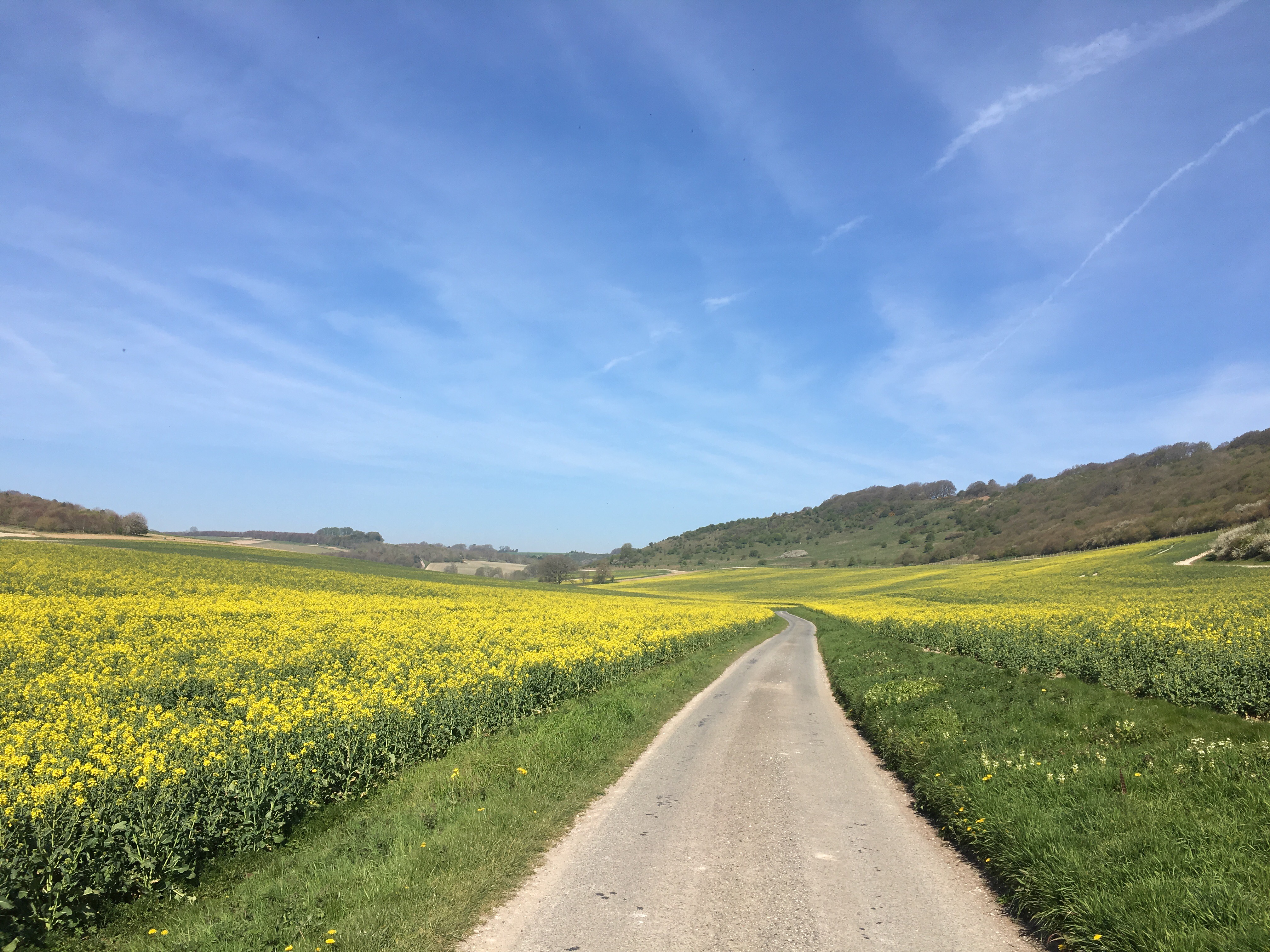
Through an open gateway, the wide expanse of Hippenscombe valley is full of flowering oil seed rape that glows against my skin – a buttercup under the chin. Yellowhammers spill onto the road, their lightbulb heads bright as the flowers and among them (almost missed) a thrilling glimpse of a yellow wagtail. A fast declining farmland bird, box-fresh from Africa in sunshine yellow, it calls three times, runs into the buttery crop and vanishes.
Washing-white cloud galleons sail over the hill like an endless flotilla of tall ships. In the small wood below the big hill, a cuckoo calls. Its voice catches in the thorns at intervals. Chased by cloud shadows, I realise it is still travelling.
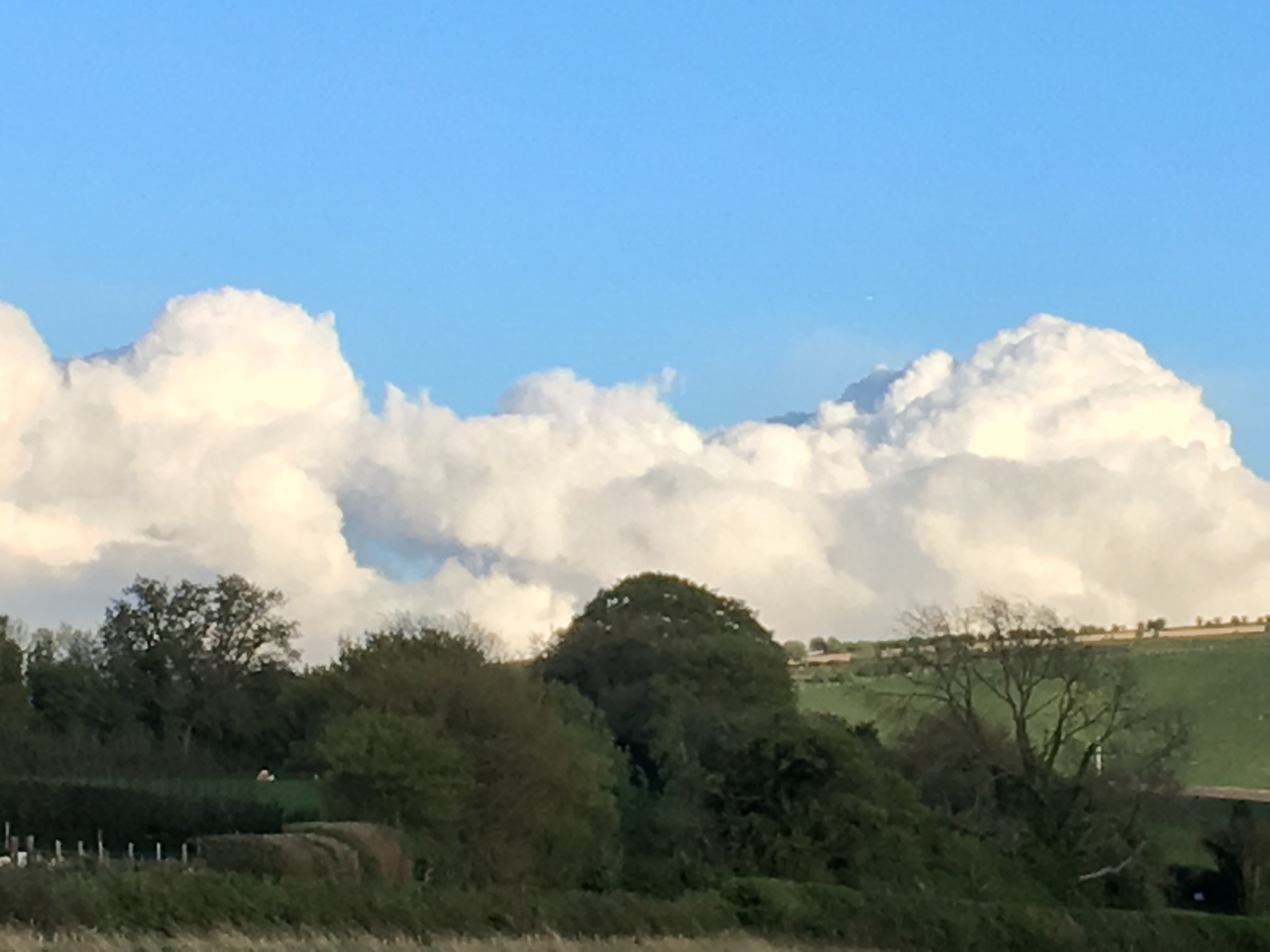
A storm comes through and turns the barleyfield into a heaving, blue-green ocean. The wind curves and combs it into swirls and eddies, and races it up the slope towards the dog and I in waves of silver surf, to crash into the hedge. It is mesmerising. I try to film it but struggle to hold the phone steady. It ripples like the pelt of a moving animal and is infectious. The dog and I run; her ears flying, my arms windmilling.
Blossom strews the lane and salts the nettles. Flowers of the oak and miniature posies of hawthorn flowers lie like the aftermath of a wedding. There is a sad, dead lamb. But also, a new foal, rain-freshened birdsong, mud to build nests with and the heady scent of lilac enhanced by thundercrack.
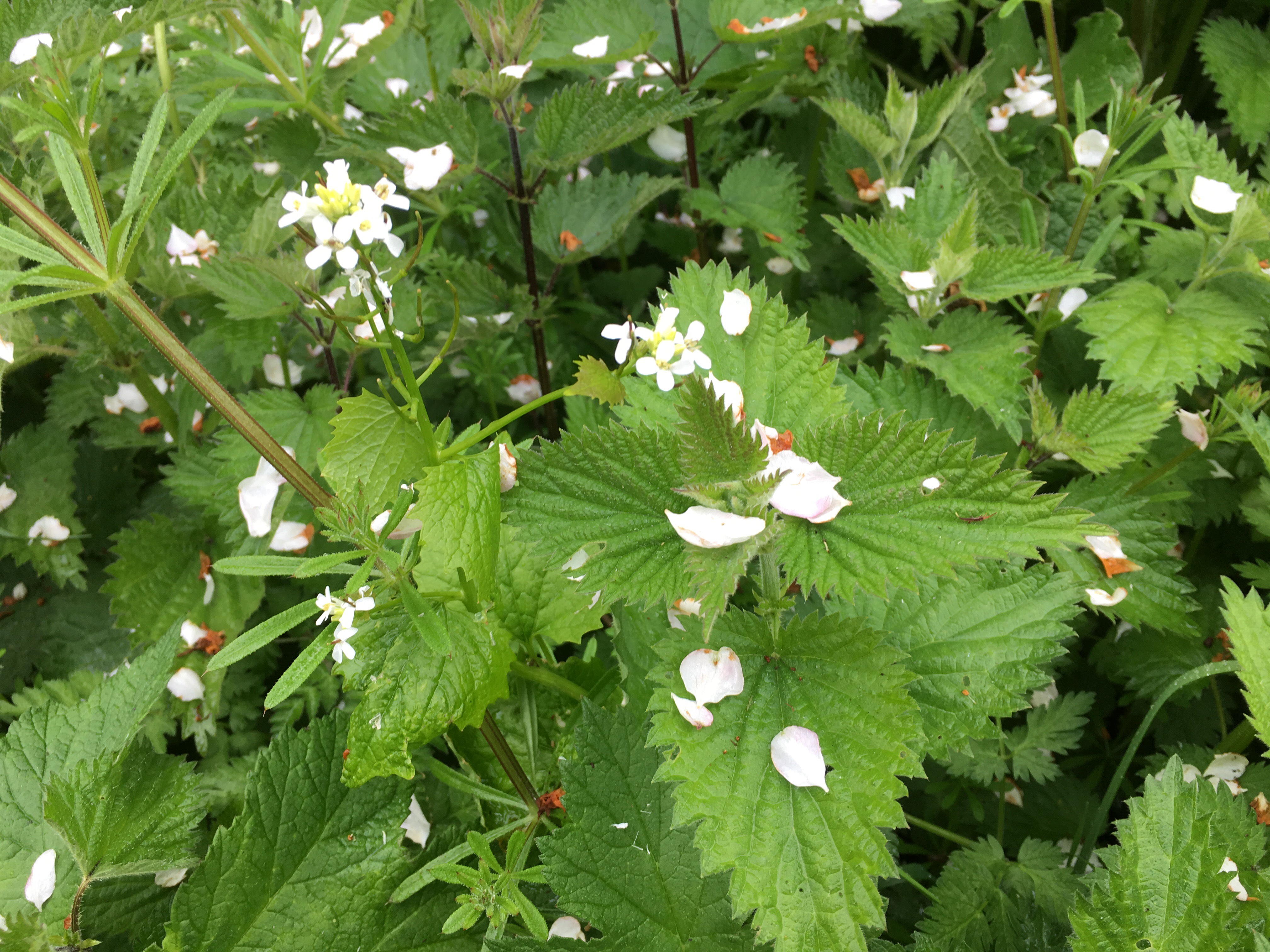
Back beneath the hill, the fast-changing cloudscape alters the light again and again, as if I am being shown a speeded-up, time-lapse panorama. It illuminates the linen folds and creases I know so well, only to hide them and reveal others in quick succession. I can’t take my eyes off it.
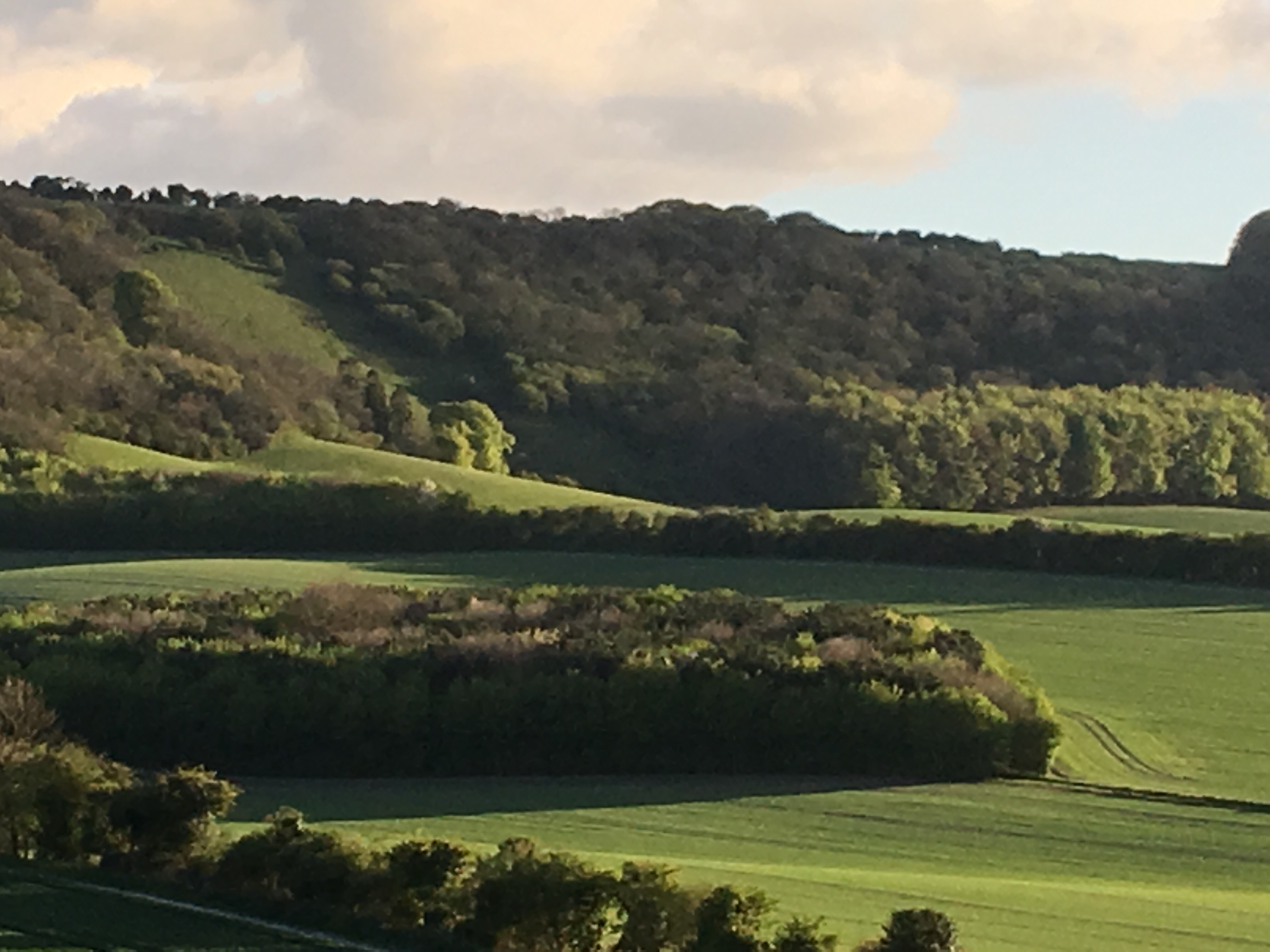
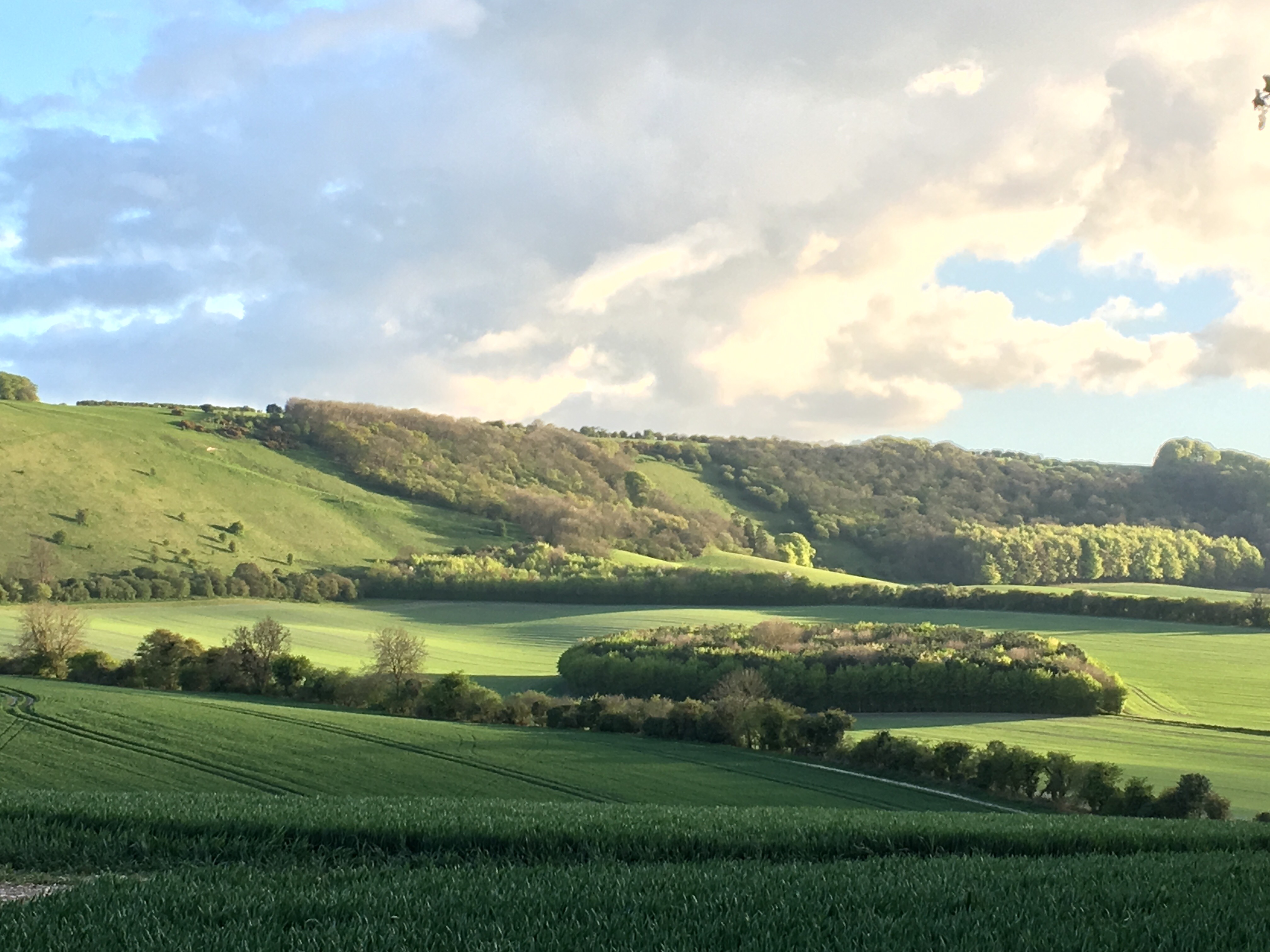
There is a yellow-green haze on the hill that I haven’t seen in ten years.
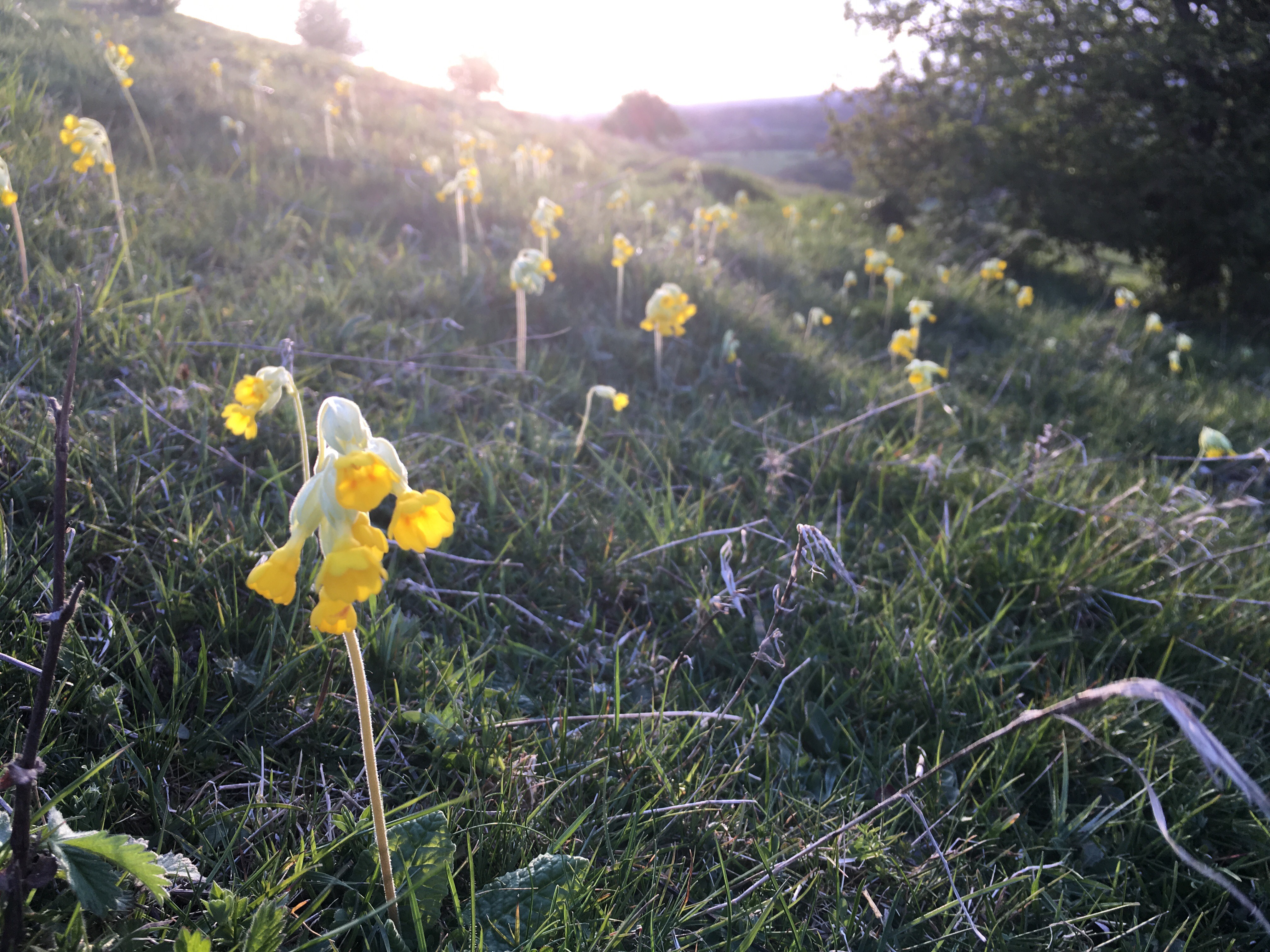
At the bottom, where it seems sheep go to die, there are vertebrae and a sprung ribcage, chalk bones springing cowslips. On the grassy pillow-tump of an anthill, a sheep’s skull rests as if it has just breathed its last, herb-scented breath.
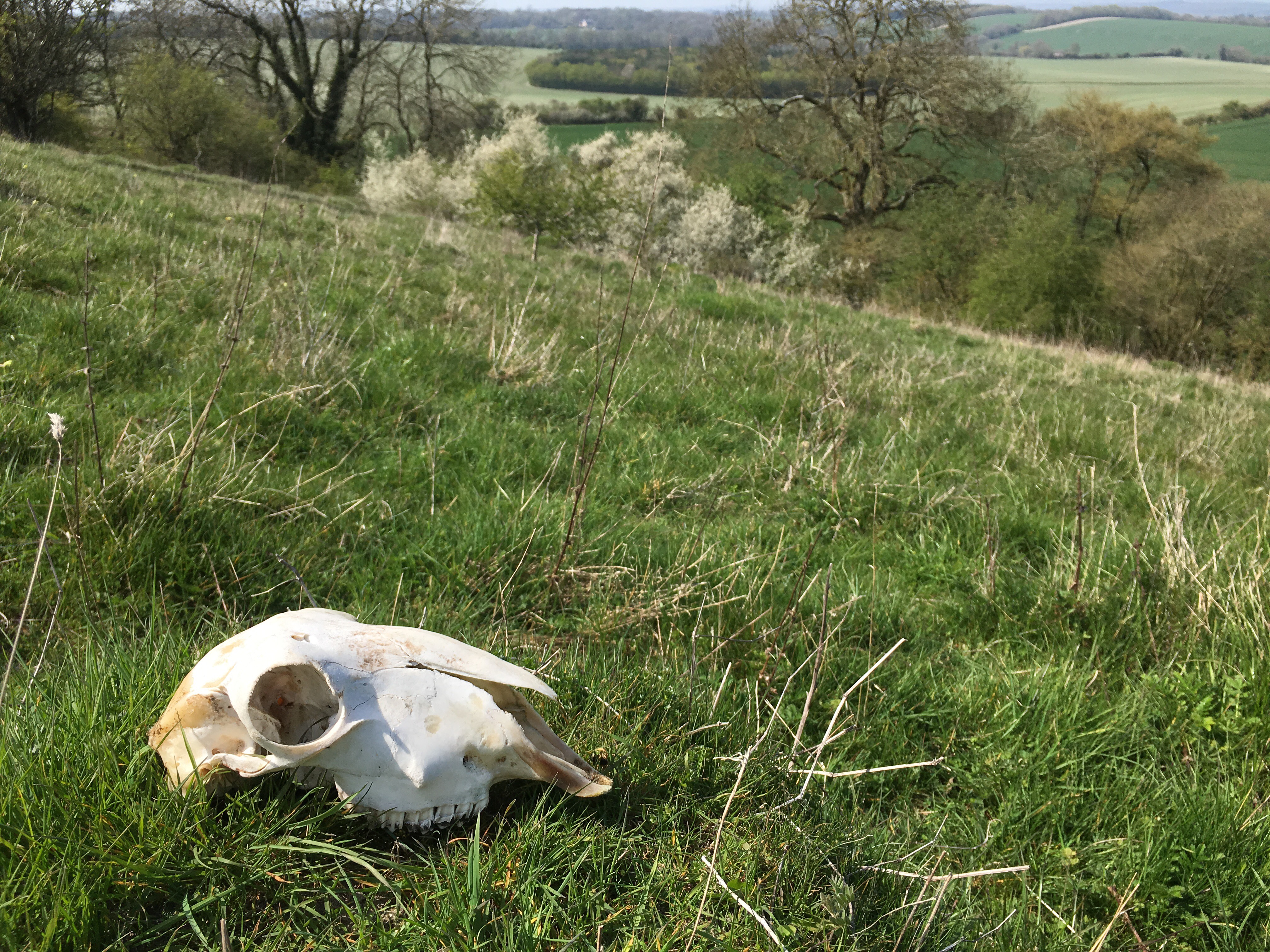
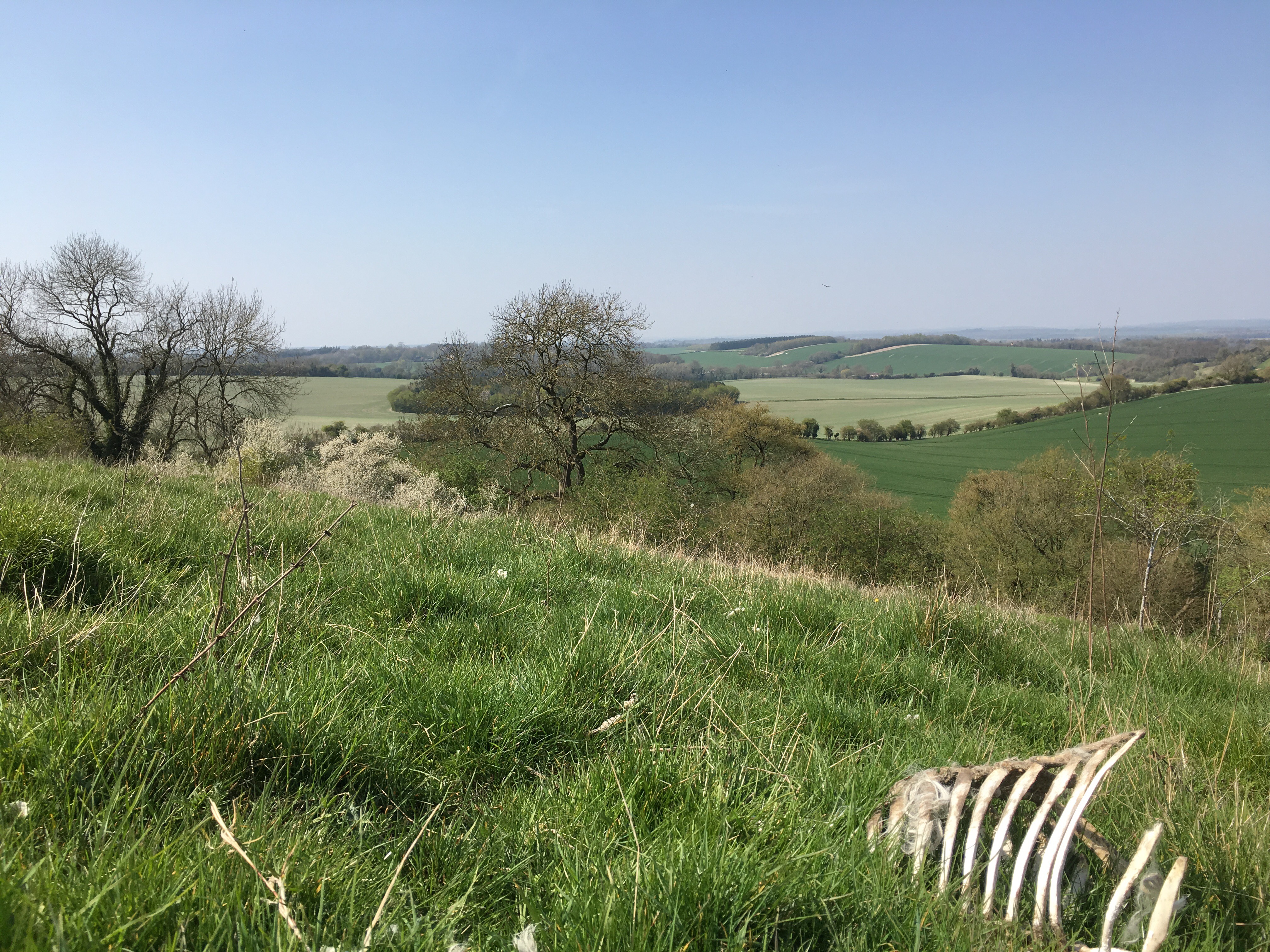
Grazing sheep are essential to this flower-rich landscape, though in past years, they have been left on the down too long, the flowers grazed off and the insects and birds declined. This year, though, a grazing rotation is in place. In the evening light, the hill emanates gold; a heap of piled treasure and nectar. The impression of millions of tiny trembling yellow bells visible from the A4.
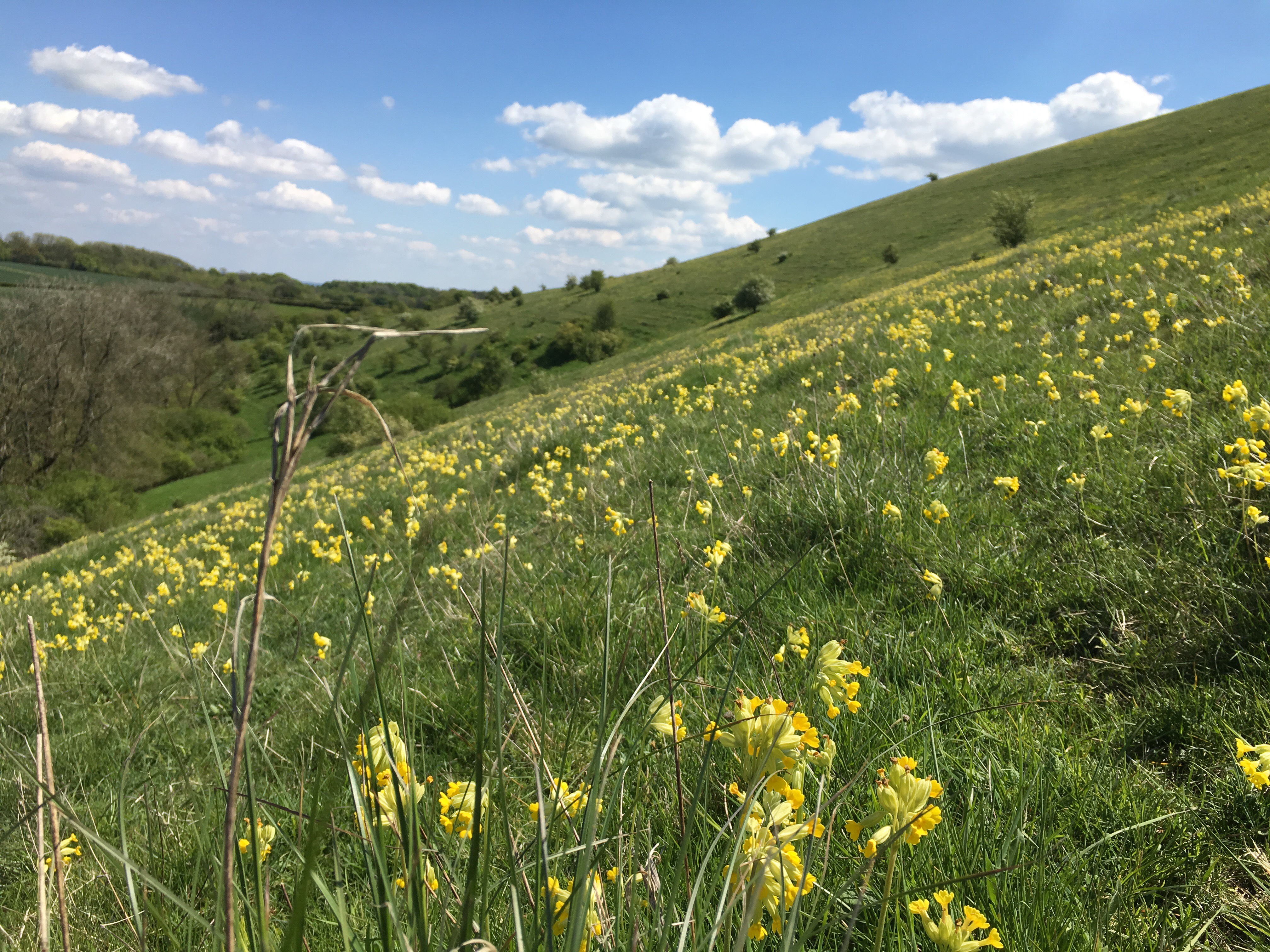
Leave a Reply to SandraCancel reply